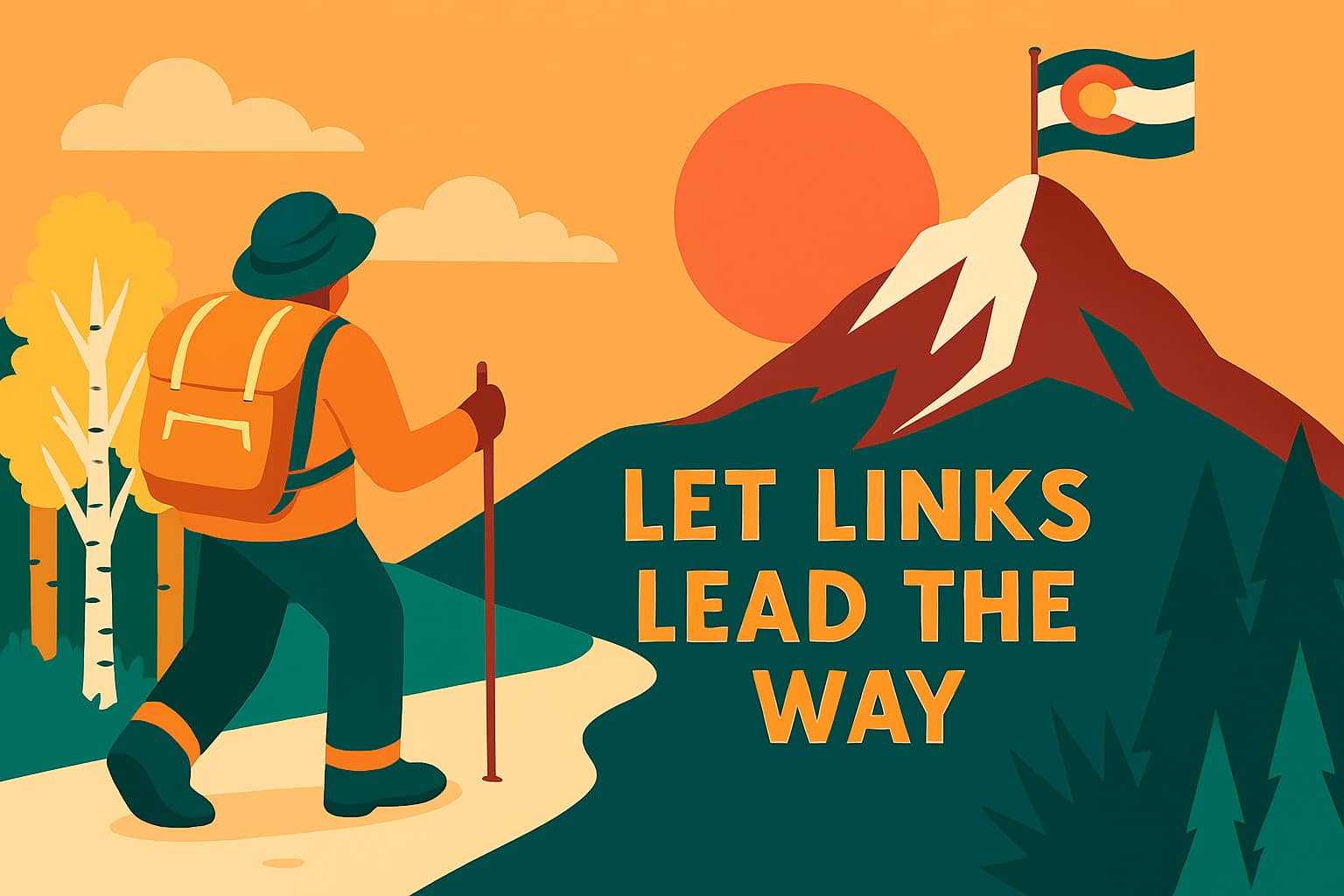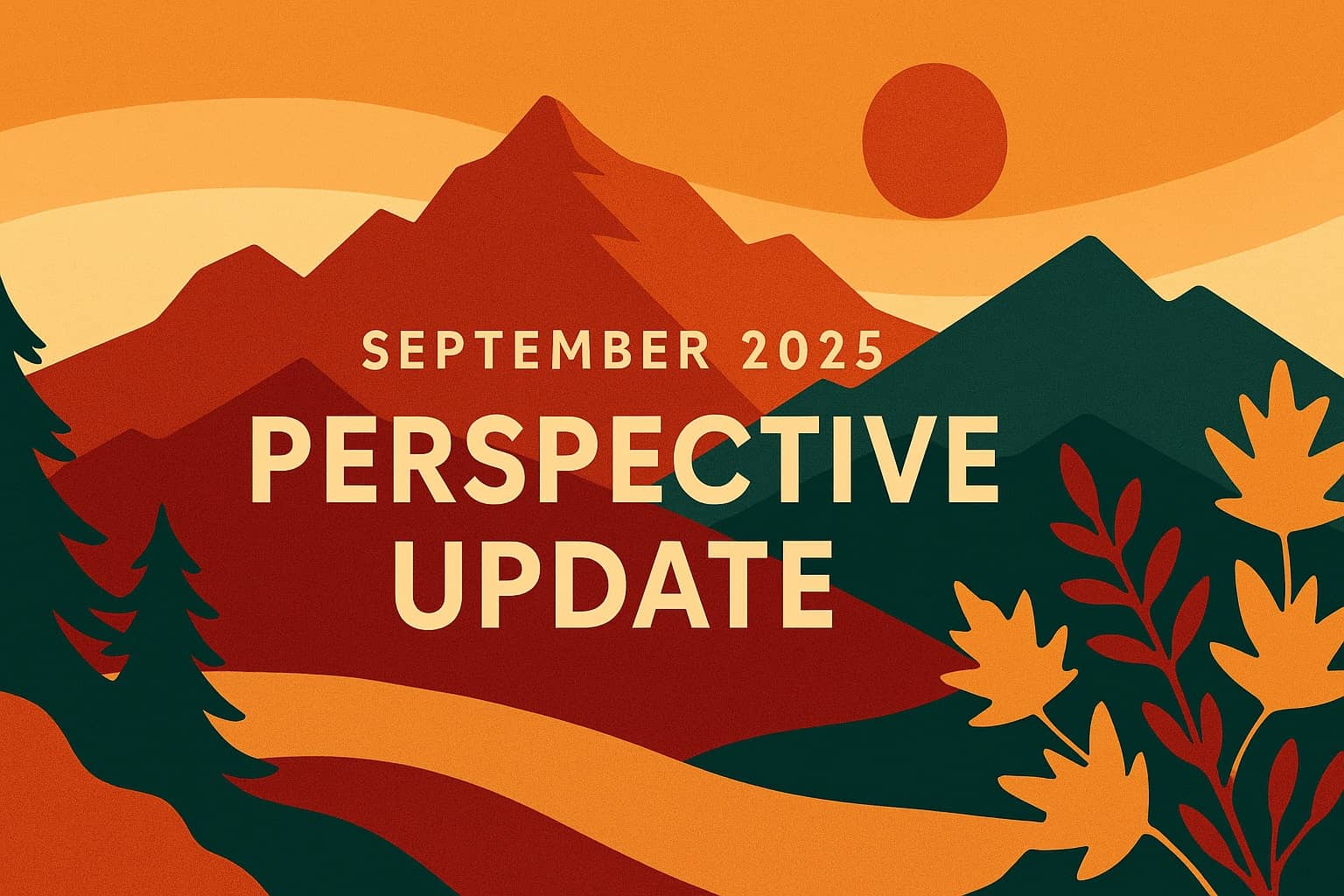table of contents
- Link Development: Your Content Deserves to Be Found—Let Links Lead the Way
- Key Takeaways
- Why Link Development Is Critical to SEO Efforts
- What Is Link Development?
- Why Link Development Matters for SEO
- Qualities of a High-Value Backlink
- Common Link Development Strategies
- Risks of Poor Link Development
- How to Build a Sustainable Link Development Plan
- want a FREE
Link Development Checklist? - Conclusion: Link Development That Leads Somewhere
Link Development: Your Content Deserves to Be Found—Let Links Lead the Way
Link development is the process of acquiring hyperlinks from other websites that point back to your own. These backlinks are a core component of SEO—they act like digital “votes of confidence,” signaling to search engines that your content is trustworthy, authoritative, and worth ranking.
Think of backlinks like trail markers in the Colorado backcountry. The more markers pointing toward your site, the easier it is for search engines (and users) to find their way to your content. Just like a well-marked trail earns more hikers, a well-linked site earns more visibility.
In this guide, you’ll learn:
- Why backlinks are essential for search rankings
- How to build links ethically and effectively
- Strategies to attract high-quality links that support long-term growth
Let’s hit the trail and explore how smart link development can elevate your site’s authority and performance.
Key Takeaways
- Backlinks are foundational to SEO – They signal trust and authority, directly impacting rankings.
- Not all links are equal – Quality, relevance, and placement determine their SEO value.
- Link building vs. link earning – The best strategy combines proactive outreach with organic recognition.
- Effective strategies take effort – Tactics like guest posting, HARO, and resource outreach drive results.
- Poor link practices are risky – Spammy or manipulative links can lead to penalties.
- Sustainable link building takes time – Set goals, track progress, and refine your approach.

Link development is like hiking in the Rocky Mountains—each quality backlink is a trail marker guiding search engines toward your site. Just as a well-marked path leads to the summit, strategic links help your content climb the search rankings. The journey takes planning, effort, and endurance—but the view from the top is worth it.
Why Link Development Is Critical to SEO Efforts
Backlinks signal trust, authority, and relevance to search engines—making them one of Google’s top ranking factors. High-quality links from reputable sites help improve your visibility, drive referral traffic, and accelerate indexing. Without a strong backlink profile, even great content can struggle to rank and reach its intended audience.
What Is Link Development?
Link development is the process of acquiring high-quality backlinks—hyperlinks from other websites that point to yours. These links help search engines understand your site’s relevance, authority, and trustworthiness, which can directly impact your rankings.
Types of Links You Can Build
- Editorial Links – Naturally earned when other sites reference your content as a trusted source
- Outreach Links – Acquired by reaching out to site owners or bloggers to share your content
- Citations – Mentions of your business on directories or local listings (especially important for local SEO)
- Guest Posts – Articles you write for other sites that include a link back to yours
- Niche Edits – Adding your link to existing content on relevant websites
Link Building vs. Link Earning
- Link Building is the proactive effort to secure backlinks through outreach, partnerships, or content placement.
- Link Earning happens when your content is so valuable that other sites link to it naturally—no pitch required.
Both approaches are valid, but the most sustainable strategy combines them: create content worth linking to, then build relationships to help it get discovered. Ready to start mapping your route? Let’s explore why link development moves the needle.
Why Link Development Matters for SEO
- Authority & Trust: Backlinks help search engines evaluate how trustworthy and authoritative your site is within its niche.
- Relevance: Links from related sites reinforce your topical expertise and improve your chances of ranking for competitive keywords.
- Referral Traffic: Quality backlinks can send targeted visitors directly to your site, expanding your reach beyond search engines.
- Faster Indexing: Search engines use links to discover new content. The more links pointing to your pages, the quicker they get indexed.
Qualities of a High-Value Backlink
- Guest Posting on Relevant Blogs – Write valuable articles for industry-related websites and include a natural link back to your own content.
- Broken Link Building – Find broken links on other sites and suggest your content as a replacement. It’s helpful for them—and beneficial for you.
- Digital PR & Journalist Outreach – Pitch stories, data, or expert insights to journalists and media outlets. A well-placed quote or feature can earn powerful backlinks.
- HARO (Help a Reporter Out) – Respond to journalists’ queries with expert insights. If selected, you’ll often receive a backlink from a high-authority media outlet.
- Resource Page Outreach – Reach out to websites with curated resource lists and suggest your content as a helpful addition.
- Local Citations & Directory Listings – Get listed in reputable local directories (like Yelp, BBB, or niche-specific platforms). These links help with local SEO and visibility.
- Skyscraper Technique – Identify top-performing content in your niche, create something even better, and reach out to sites linking to the original, asking them to link to yours instead.
Common Link Development Strategies
- Relevance to Your Niche – Links from websites in your industry or topic area carry more weight and reinforce your site’s expertise.
- Authority of the Linking Domain – A backlink from a well-established, trusted site (think news outlets, universities, or respected blogs) is far more impactful than one from a low-quality or unrelated source.
- Placement Within Content – Links embedded naturally within the main body of an article are more valuable than those tucked away in footers, sidebars, or comment sections.
- Natural Anchor Text & Editorial Context – The clickable text (anchor text) should feel organic and relevant, not overly optimized or forced. It should fit seamlessly into the surrounding content.
- Dofollow vs. Nofollow Attributes – A dofollow link passes SEO value (or “link juice”) to your site, while a nofollow link does not. Both have their place, but dofollow links are typically more beneficial for rankings.
Risks of Poor Link Development
As we mentioned earlier, not all links are good links. Just like taking an unmarked trail in the Colorado backcountry, poor link development can lead you off course—and sometimes into dangerous territory. Search engines are smarter than ever, and they can quickly identify manipulative or low-quality tactics.
- Spammy or Irrelevant Links – Links from unrelated or low-quality sites can hurt your credibility and trigger search engine penalties. If it feels off-topic or forced, it probably is.
- Over-Optimized Anchor Text – Using the exact keyword-rich anchor text repeatedly can look unnatural and manipulative. Search engines prefer organic, varied phrasing.
- Buying Links Without Proper Attributes – Purchasing backlinks without marking them as sponsored or using “nofollow” attributes violates Google’s guidelines and can result in ranking drops or manual penalties.
How to Build a Sustainable Link Development Plan
Building a long-term link development strategy requires a clear route, the right tools, and a plan for adapting to changing conditions. Sustainable link building isn’t about quick wins; it’s about consistent effort that compounds over time.
- Set Clear Goals – Define what success looks like—whether it’s improving keyword rankings, increasing referral traffic, or boosting domain authority.
- Identify Link-Worthy Content Assets – Create or highlight content that’s genuinely useful, unique, or insightful. Think guides, data studies, infographics, or expert commentary.
- Research Competitors’ Backlink Profiles – Use tools like Ahrefs or SEMrush to see where your competitors are earning links, and uncover opportunities they’ve missed.
- Prioritize Outreach Targets – Build a list of relevant blogs, media outlets, directories, and resource pages. Focus on sites that align with your niche and audience.
- Track Progress & Refine Strategy – Monitor your backlinks, referral traffic, and rankings. Adjust your outreach tactics and content focus based on what’s working.
Conclusion: Link Development That Leads Somewhere
Link development isn’t just a technical SEO tactic—it’s a long-term investment in your site’s visibility, authority, and growth. When done correctly, backlinks serve as trusted cairns, guiding search engines and users to your most valuable content.
- Backlinks remain one of Google’s top ranking signals
- High-quality links build trust, relevance, and referral traffic
- Strategic link development supports sustainable SEO success
Ready to take the next step? Download our printable Link Development Checklist above or schedule a backlink audit to start mapping your route to stronger rankings.
Link Development Glossary – 5 Key Terms
Backlink
A hyperlink from another website that points to your site. Backlinks are a major factor in how search engines assess your site’s authority and relevance.
Anchor Text
The clickable words in a hyperlink. Search engines use anchor text to understand the context of the linked page. Natural, varied anchor text is best for SEO.
Dofollow vs. Nofollow
- Dofollow links pass SEO value (“link juice”) to your site.
- Nofollow links do not pass SEO value but can still drive traffic and visibility.
Both types have strategic value depending on the context.
Link Equity
The SEO value or authority is passed from one page to another through a backlink. High-quality links from authoritative sites transfer more link equity.
Link Building vs. Link Earning
- Link Building involves actively pursuing backlinks through outreach, partnerships, or content placement.
- Link Earning happens when others link to your content naturally because it’s valuable or unique.




